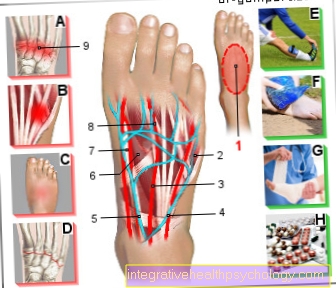Abdominal crunch with the expander
introduction
The abdominal muscles and deep back muscles are responsible for an upright gait and are therefore particularly important for functional strength training. Since back pain is the number one widespread disease, back training and abdominal muscle training are particularly important in health-oriented muscle building training. The abdominal crunch is one of the most famous exercises in training the abdominal muscles and is often referred to as "crnuches" or "sit-up's". The use of an expander is not absolutely necessary for conventional abdominal muscle training, but if done correctly it can provide additional stimuli for greater stress.
Many athletes strive for a perfectly toned washboard abs and are also perceived as particularly attractive by the opposite sex. However, achieving this goal is often further afield than initially assumed. In addition to perfect training, constitutional characteristics and the right diet are particularly important. The training plans for the perfect stomach in 5 weeks advertised in countless fitness magazines are also always in the eye of the beholder.
Muscles that are used during abdominal crunch
- straight abdominal muscle (Rectus abdominis muscle)
Figure musculature

- straight abdominal muscle
- External oblique muscle of the abdomen
Motion description

Depending on your level of ability, the exercise can be carried out either without or with the use of the expander. The athlete lies flat on his back during the abdominal crunch. The head posture should be held individually depending on your own feelings, but it is recommended to keep your head facing upwards during the movement. The feet either stand on the floor with toes pointing towards the ceiling, or are bent at the hips and knees. (see picture)
During the movement, the back should be released from the floor in a rolling motion.
Tips:
- If there is tension in the neck area, a towel can serve as a base. The athlete grasps two ends of the towel and thus allows the head a support surface.
- The abdominal muscles are designed for static contractions, and therefore a very slow to static movement is recommended.
- The feet must not be fixed as previously assumed, since the lumbar muscle takes on the main task of movement in this execution.
The exercise can optionally be carried out to the side, in order to particularly work the outer and inner oblique abdominal muscles.
Further information
Here you can find more information about abdominal muscle training with the expander
- Reverse crunch
- Washboard abs
- Washboard abs exercises
Back to overview Expander training





























